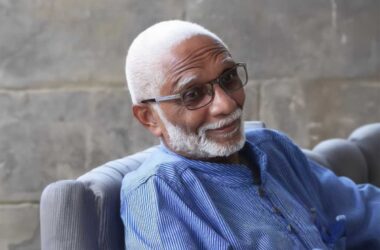
I share the lament of those who feel Saint Lucia should be much further along on its development path, after 45 years as an Independent nation. However, I part company with those who suggest our country has achieved very little to nothing. Indeed, I would assert that given the state of things, economically, socially, and environmentally in 1979, Saint Lucia has come a very long way. One of the areas in which we have made unimaginable progress is electricity provision.
I was born in the days when the homes of rich and poor alike were equipped with 4 essentials: kerosene lamps, candles, flashlights, and battery-powered transistor radios. Their use between the hours of sunset and sunrise was not optional, but mandatory. That’s because the lone power plant at Union that “served” the City, had little plant and even less power. It just could not handle the strain generated by a burgeoning population. For many poor households in underserved areas, the candle was the primary source of light.
I grew up at a time when streetlamps were so few and so far between, that there was just as much darkness between their intent and their effect. Blackouts were so frequent and so prolonged that when the lights went out, we took this as our cue, to go to bed. For our seniors, nightlife was severely limited. Going to a movie at Clarke’s and Gaiety was like playing a game of “roll and tumble.” They would often return home frustrated that the power had gone off at a critical point in a movie. Practically every windowsill in the town was adorned with batteries of various sizes, seeking dubious recharge from what must have been a bemused sun. Brownouts were just as common as blackouts. Many a church sermon was mercifully cut short by power outages; and in offices around the City, electric typewriters were often angrily abandoned by frustrated Secretaries, who reluctantly had to fall back on their manual predecessors.
Except for Vieux-fort – where the Americans had set up a state-of-the-art power plant, mainly for their own purposes and in Anse la Raye – the situation in other parts of the island was just as “black” as in Castries. In Soufriere, some residents got sporadic power from a water wheel and a diesel engine installed on the estate of Andre Du Boulay. This was later to be supplemented, first by a generator installed by Copra Manufacturers and then by a hydro-electric plant. Anse-la Raye was the first village to be fully electrified thanks to another hydro-electric facility situated on the Adjodha family estate.
For Castries residents, more light began to appear at the end of a long tunnel, when in 1964, the Government joined with the Commonwealth Development Corporation (CDC) and the then Castries Town Board (CTB), to set up LUCELEC. Much has been made of the exclusive license and the guaranteed rate of return on investment, that was granted to the company. But remembering the dismal state of things in 1964, I hold a sympathetic view of this arrangement. I cannot imagine what other terms could have been offered to an entity to invest in the electricity sector of an undeveloped island, with a sub-optimal customer base, high poverty and unemployment, and a monocrop economy. Besides, at the time, the Government and the CTB earned much needed revenue from their combined 47% stake in LUCELEC, with the CDC holding the remainder of the shares.
The formation of the company produced a unified and centrally managed source of power, from the many small facilities that were scattered around the island. But it would take LUCELEC nearly 30 years to bring about a measurable improvement in the production and supply of electricity to a burgeoning population, which grew from approximately 93,000 in 1964, to 114,000 in 1979 and to 150,000 people in 1994. The construction of the Company’s modern plant at Cul-Sac and a 66KV transmission line linking the entire country remains one of the unheralded engineering feats accomplished since Independence. Whenever I drive around the country, I am amazed when I look upon the aggressive terrain traversed by LUCELEC’s power grid. And when I drive past the company’s plant at Cul-de-Sac, only the transformer park reminds me it’s there. There is none of the noise of its predecessor at Union that stoked fear in some that drove by.
CDC’s Impact
Among the many chapters of LUCELEC’s impressive story that fill me with immense pride, include the fact that it represented a fusion of local and foreign vision, commitment, and talent. In the CDC, Saint Lucia found a willing and able partner, committed to the indigenization of the management of the company. Several Saint Lucians including Bernard Theobalds, John Joseph and Trevor Louisy were trained to assume the leadership of the company. The fact that CDC had a similar stake in the power sector in other countries enabled it to push a regional approach to capacity building. LUCELEC managers received invaluable hands-on training in running companies on the smaller islands.
Also, I am pleased with the measured and impactful way LUCELEC growth and development strategy has been executed. Since going public in 1994, the company has truly taken off, thanks to strong and enlightened governance and sound planning. Now, 99% of those who need electricity can access it. Nearly 90% of LUCELEC’s 68,000 customers say they are satisfied with LUCELEC’s service. In the first half of 2022, this metric had climbed risen to nearly 94% but declined due to pandemic-related challenges. This is no small feat, given the size and scale of LUCELEC’s generation, transmission, and distribution infrastructure, which includes 75 miles of transmission lines and 2,643 miles of distribution lines. The company has kept up with innovations in the electricity sector and has introduced several new and emerging technologies over the years.
Wider regional impact
LUCELEC can justly take credit for its pivotal role in the formation of the Caribbean Electric Utility Services Incorporated (CARILEC), which is based in Saint Lucia. Since 1989, CARILEC has been providing critical technical information, capacity building, conference, and other services to its members. The Secretariat is also playing an axial role in electric utility advocacy and sustainability within the Caribbean and parts of Latin America. A key feature of CARILEC’s services is its disaster assistance programme, through which it supports the efforts of its members to quickly recover from disasters. Through this programme, technical teams are pre-positioned in countries that are in the path of extreme weather events, to undertake damage assessments and help restore affected transmission & distribution networks.
Disappointments
Amid this ringing endorsement, I share two disappointments. Firstly, I am disappointed that LUCELEC has not made more headway on the renewable energy front. As I’ve shared in an earlier commentary in this newspaper, there is arguably no more effective way for SIDS to build economic resilience than through RE development. The contribution of LUCELEC’s 3MW solar farm in Vieux-fort to its bottom line, demonstrates the wider financial impact that can be achieved through a more aggressive expansion of RE in the country’s energy mix. In 2022, the farm produced 6.6 million units of electricity, thereby reducing fuel consumption by 340,000 gallons, and generating savings of EC$3.89M. Since it was commissioned in 2018, the farm has produced 31.3 million units of electricity leading to a 1.6-million-gallon reduction in fuel purchased, and a cost savings of EC$12.97M. (LUCELEC, 2023). Further, following changes in the law to permit Independent Power Producers (IPPs), over 200 distributed generation (roof top solar PV) systems are now connected to LUCELEC’s grid, providing 1.67 MW of renewable energy capacity. At first blush, this would seem to be quite commendable, except when we consider that nearly a decade ago, Barbados had over twice as many IPPs.
As explained by the company’s chairman, John Joseph in the LUCELEC’s 2023 Annual Report, a key challenge in expanding the company’s RE footprint has been its “…inability to acquire suitable sites from private landowners in a land market that is becoming increasingly speculative.” The chairman rightly noted that the resolution of this longstanding challenge cannot be achieved by LUCELEC alone and called for “…a vigorous and sustained effort by key public sector agencies, notably, the Department of Infrastructure and the Development Control Authority (DCA). To my mind, this is a matter that must be addressed with the seriousness it deserves. The resilience of Saint Lucia’s development is at stake. As a major shareholder and as the ultimate beneficiary of RE development, Government should not be reluctant to step in and acquire in the public interest, lands that are deemed suitable for RE development. Further, Government must pay special attention to coastal lands that could accommodate wave energy and ocean thermal energy conversion projects.
LUCELEC is not to be blamed for my second disappointment which is linked to the failure of a planned merger between WASCO and LUCELEC to get off the ground. As I recall, strong enthusiasm for the idea was evident in meetings chaired by PM Compton with the leadership of both companies. There was an agreement-in-principle for a phased approach which would build on the support that LUCELEC was already providing to WASCO with its billing operations. Alas, this initiative was to become another casualty of policy differences between successive Governments. However, I am pleased to note that the former Managing Director of LUCELEC is now the chairman of the Board of Governors of WASCO. I say no more.
As we celebrate the 45th anniversary of Saint Lucia’s Independence, we can take great pride in LUCELEC’s steady and impressive performance, especially over the past three decades.





